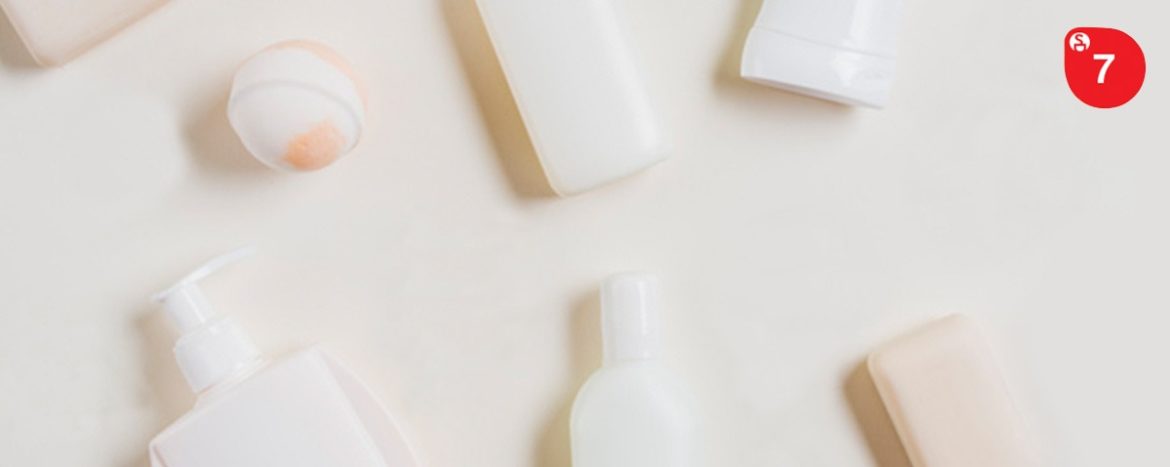During pregnancy, hormonal changes can make your skin condition less stable. However, expectant mothers often become cautious and fearful, worrying that skincare ingredients might affect their baby, so they choose to avoid all skincare products entirely. While this is one approach, having well-maintained, healthy skin does affect your mood to some extent. If given a choice, most people would prefer to feel radiant, practice self-care, and maintain inner happiness which is also beneficial for your baby.
What ingredients should pregnant women be cautious about?
Searching online for ingredient safety can be overwhelming, with a flood of information! To simplify things, we’ve referenced the American EWG (Environmental Working Group) cosmetic ingredient database, to create this guide for expectant mothers:
EWG research found that 34% of beauty and skincare products on the market contain chemical carcinogens, and 45% contain toxins that hinder reproductive development.
Artificial Fragrance (EWG score 8)
Fragrances are present in various everyday products, and we’ve become so accustomed to them that we’ve forgotten truly natural scents.
When discussing the harm of fragrances to the human body, many people don’t notice it. US federal law doesn’t require all chemical components that make up fragrances to be listed on retail products. EWG investigated 17 well-known fragrance-containing products and found that, on average, each product had 14 chemical components that were NOT listed on the packaging! Fragrances interfere with hormones and are among the top five allergenic ingredients, so EWG recommends consumers purchase fragrance-free products whenever possible.
Additionally, Coumarin (EWG score 7) is a fragrance ingredient whose usage is restricted by the EU. It’s commonly used in perfumes, essential oils, or cosmetics as a fixative, and is even one of the ingredients in certain well-known pregnancy oils.

Methylisothiazolinone/Methylchloroisothiazolinone (EWG score 6-7)
The EU banned Methylisothiazolinone (MI) and Methylchloroisothiazolinone (MCI) in leave-on products (like lotions) long ago, but Taiwan only banned them in 2018. MI/MCI are inexpensive and require only a small amount for effective antibacterial action, so manufacturers use them widely. They’re commonly found in shampoos, shower gels, hand soaps, and face masks. However, MI/MCI are also common allergens, and studies on mammalian brain cells show that MI may have neurotoxic properties.
Inna Organic doesn’t use controversial preservatives, and certainly wouldn’t use MI/MCI. We also remind everyone to check if your face masks contain these two ingredients. If a manufacturer recommends washing your face after using a mask, it’s classified as a “rinse-off product” under Taiwanese law, making the use of MI/MCI legal. (Note: Taiwan banned the addition of MI/MCI in leave-on products starting April 2018.)
As for rinse-off products like shower gels and shampoos, using MI/MCI is completely legal. I’ve seen hotel shampoos and shower gels containing MI/MCI more than once. Using products containing these two ingredients may not cause immediate harm, but if there are other options, why not use them? That’s why I bring my own washing supplies when staying at hotels, it’s both environmentally friendly and reassuring. Pregnant women should carefully examine the ingredients in the products they use.
Parabens Preservatives
The Parabens family has many members and is one of the preservatives commonly used in beauty and skincare products, especially in Japanese products. The European Scientific Committee states that long-chain parabens like propyl and butyl paraben may interfere with the endocrine system and cause reproductive system and human development disorders. Foreign literature has also shown that some types of parabens can be irritating, easily causing allergic reactions and affecting hormone secretion.
We’d like to remind our customers that not all parabens pose risks.
Palau prohibits the following four parabens:
PEGs/Ceteareth/Polyethylene compounds
The PEG family members are products of the petrochemical industry, commonly found in facial cleansers, shampoos, and hair conditioners. These ingredients usually contain 1,4-dioxane, considered a carcinogen in the US. Test documents show that this substance still appears frequently in products. In fact, there are many alternatives to PEG-series ingredients. Certified organic products try to avoid petrochemical industry products as much as possible. Products that have truly obtained organic certification will naturally avoid these PEG ingredients.
Small reminder: Many commercial products have a natural and organic image, but this doesn’t mean they’ve obtained product organic certification—they may be using minimal organic ingredients or may be self-proclaimed organic without any third-party verification. If you carefully examine the full ingredients, you may likely see members of the PEG family.

Phenoxyethanol (EWG score 4)
Another preservative favored by skincare product manufacturers. Besides being obtained from natural ingredients, it can also be synthesized chemically. At generally low concentrations, it’s less irritating to the skin. However, in data released by the US FDA in May 2008, there was a warning that it suppresses the central nervous system. There have been cases of dizziness in infants and mothers when the product wasn’t washed off after use.
According to statistics from Urcosme’s face mask rankings, over 75% of well-known brand face masks contain phenoxyethanol. Japan’s current regulation limits usage to below 1.0%, while Taiwan currently has no relevant regulations. If Taiwanese-made skincare products contain this ingredient, doctors also recommend checking the concentration before use to ensure skin safety. (Update: In December 2019, Taiwan’s Ministry of Health and Welfare added phenoxyethanol to the preservative list. Products containing phenoxyethanol can no longer claim to be “preservative-free,” and the usage limit is 1%.)
Toluene (EWG score 10)
Toluene is a widely recognized toxic substance. The US Environmental Protection Agency (EPA) states that long-term inhalation of toluene can cause respiratory and eye irritation, as well as symptoms like sore throat, dizziness, and headaches. Pregnant women with long-term exposure to toluene and its mixed gases and solvents can damage fetal development, potentially leading to central nervous system problems, attention deficits, and limb abnormalities.
Toluene is toxic to the immune system, and some evidence links it to malignant lymphoma. Besides beauty and skincare products, paints, coatings, adhesives, rubber, etc., should all avoid products containing toluene.
Every mother wants to protect her children and create the safest environment possible. Friends and customers who have just become pregnant often ask, “What can I eat? What can I use?” For some reason, the probability of children having allergies seems much higher now than when we were young. Perhaps it’s due to the increasing number of artificial substances in our surroundings (some even disguised as natural), or perhaps it’s the pollution humans have created coming back to affect us.
Pregnancy is already an anxious time, and truthfully, it’s quite difficult to interpret the ingredients in skincare and cleaning products without a relevant background. There’s also a lot of information online, and everyone says something different—how should you judge?
Here’s a simple way for pregnant mothers to make decisions: Choose products certified by the American EWG. Check if the packaging has the EWG logo and verify on the EWG website that the product has been certified.
EWG updates its ingredient safety database annually, requiring certified manufacturers to change ingredients or provide more supporting documentation to ensure products are sufficiently friendly to human health and the natural environment. The clean beauty trend currently popular in the US reflects how American consumers choose products—based on transparent ingredient labeling, safety, non-toxicity, and concern for environmental sustainability.






Leave a comment